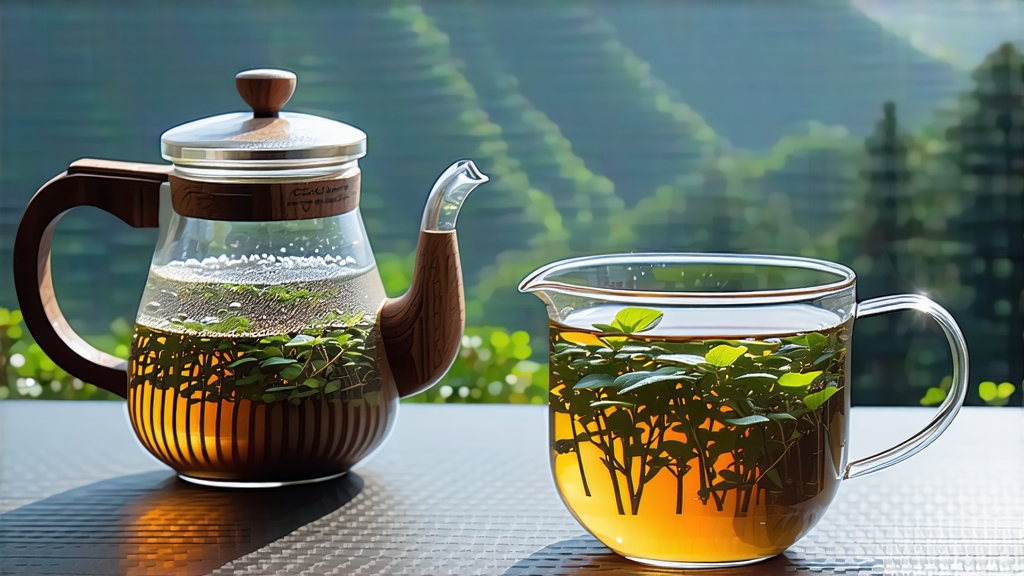
Tucked high on the mist-capped Meng Ding Mountain in Ya’an, Sichuan, a tea once reserved for emperors still awakens each April when the plateau air is thick with orchid-scented clouds. Meng Ding Huang Ya—literally “Meng Ding Yellow Bud”—is the least-known yet most aristocratic member of China’s yellow-tea family. While green tea grabs the spotlight for freshness and pu-erh for aging mystique, yellow tea occupies a whispered middle kingdom where time is briefly frozen and flavor is coaxed, not forced. To understand Meng Ding Huang Ya is to witness a six-century-old ritual of controlled breath, a tea that is oxidized only long enough to mellow its edges, then “swaddled” in cloth so its own enzymes paint the liquor the color of morning sunlight on bamboo.
Historical scrolls from the Ming dynasty record that Buddhist monks on Meng Ding offered the first spring buds to the imperial court in 1368. The mountain’s 1,450 m elevation, perennial fog, and sandy loam rich in selenium create a natural greenhouse that delays sprouting, concentrating amino acids. When the Yongle Emperor tasted the resulting tea—sweet like dew, with no grassy bite—he declared it gong cha (tribute tea) and sealed the mountain’s reputation. Caravans carrying compressed bricks of Meng Ding Huang Ya later joined the Tea Horse Road, bartered for Tibetan warhorses, so the same buds that once graced dragon-thrones also nourished nomads on the plateau.
Botanically, the cultivar is a local variant of Camellia sinensis var. sinensis known as “Ya’an early bud.” Its leaves are micro-fermented, not by adding microbes but by manipulating humidity and temperature during the kill-green phase. Picking is draconian: only the single bud and half-open first leaf, planted between 5 a.m. and 9 a.m. when dew still acts as a natural protective film. A master picker can finish just 500 g of fresh material in a day; 5 kg of these downy tips shrink to 1 kg of finished tea after the yellowing process.
Crafting Meng Ding Huang Ya is a dance of restraint. The freshly picked shoots are spread on bamboo trays for two hours to wither, driving off surface moisture and initiating gentle enzymatic activity. Next comes a short shaqing (kill-green) in woks heated to 140 °C for four minutes; the tea master tosses the buds with a rhythmic clatter that sounds like rain on tile. While green tea would immediately be dried at this point, yellow tea enters its signature men huang (“sealed yellowing”) stage. The hot leaves are piled in small heaps, wrapped in wet linen, and left in a 30 °C, 75 % humidity chamber for 6–8 hours. During this nap the chlorophyll quietly degrades, polyphenols oxidize just 5–10 %, and a veil of velvety down forms on the bud—visible proof of non-enzymatic browning. A final low-temperature bake at 60 °C for two hours locks in the chestnut-sweet aroma while reducing moisture to 5 %. The finished leaf is slim, needle-straight, and olive-gold with a micron-thin down that glints under light.
To brew Meng Ding Huang Ya like a Sichuan tea monk, start with glass or thin porcelain so you can watch the buds stand upright, a phenomenon locals call “the forest of spears.” Use 3 g of leaf for 120 ml of water, a ratio that translates to one heaping teaspoon per small cup. Water should be 85 °C—hot enough to awaken aromatics yet cool enough to preserve the downy hairs. After a quick 5-second rinse to awaken the leaf, infuse for 45 seconds. Subsequent steeps lengthen by 15 seconds; the tea gracefully yields five infusions before its soul drifts away. If you own a gaiwan, tilt the lid at 45° on the last steep to invite a gentle breeze that coaxes a final honey note.
The liquor color is the first clue to its pedigree: not the grassy jade of green tea nor the amber of oolong, but a shimmering primrose yellow like early dawn. Bring the cup to your nose and you’ll find a layered bouquet—steamed corn, fresh orchid, and a whisper of alpine sage.